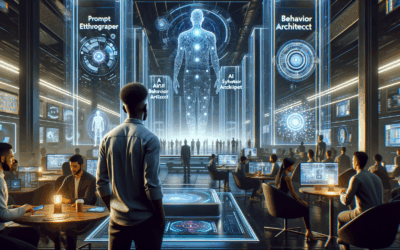From passive help to intelligent copilots: discover how AI is accelerating development, boosting productivity, and reshaping software engineering.
If developers once relied on forums and repositories to find solutions, we now live in the era of AI-based code copilots. From autocomplete to full-system code generation, these tools are transforming how software is built and opening a new chapter in engineering history.
📜 Topics included in this post
How AI Coding Assistants evolved from Copilot to Claude 3.7
Practical use cases: testing, experimentation, reverse engineering, and more
Why companies aren’t replacing everything with AI CodeGen (yet)
How developers become architectural orchestrators with AI
The impact of CodeGen on standardization, documentation, and CI/CD
Access the full article by clicking the button below…
Welcome to a new era of software development. AI coding assistants — also known as CodeGen, Coding Copilots, or AI Pair Programmers — are reshaping not only individual productivity but the architecture and team dynamics in engineering.
From rapid experimentation in Data Science projects to the automation of unit testing, AI already proves its strength as a technical ally on multiple fronts. Tools like GitHub Copilot, Claude 3.7, and Amazon Q Developer can now generate functional code, structure tests, suggest improvements, accelerate prototypes, and even break down legacy systems into reusable parts. But how far will this revolution go?
For many teams, the benefit lies in being able to iterate faster, generate base code for PoCs, or structure a new system based on ready-made architecture patterns. Additionally, CodeGen stands out for:
- Data Science Experimentation: building pipelines and models in minutes.
- Automated Testing: generating use cases and test structures with PyTest, JUnit, etc.
- Accelerated Prototyping: writing full scaffolds for apps and services.
- Reverse Engineering & Migration: explaining legacy code and translating it to modern languages.
- MLOps Scalability: creating APIs, pipelines, Docker setups, and infrastructure as code.
But there are limits. Companies still operate under strict architectural guidelines, with CI/CD pipelines, code reviews, and multiple stakeholders per feature. An AI that generates code fast doesn’t always align perfectly with this ecosystem. The challenge is to integrate copilots into the architectural workflow and team culture — not to bypass it.
The developer becomes more of a strategist, deciding what to build, how to split functionalities, and which architectural pattern to adopt. The AI enters as a fast piece-builder. It’s a collaborative model where productivity increases without sacrificing quality, control, and governance.
Another crucial point is consistency. Tools like Cursor AI already suggest refactors to maintain style, naming conventions, and uniform structure throughout the codebase, easing maintenance and long-term evolution.
Ultimately, AI Coding Assistants are not here to replace developers but to empower them. By accelerating repetitive tasks, suggesting patterns, and eliminating boilerplate noise, they let teams focus on what truly matters: building purposeful, scalable, and elegant solutions that deliver real impact.
3 AI business ideas related to this topic
|
Check out 3 interesting AI business about AI Coding Assistants.
|
Learn more about AI Coding Assistants with the in-depth prompt
|
Use AI to learn more about AI Coding Assistants? Just copy and paste the prompt below into ChatGPT or another AI of your choice.
|









0 Comments